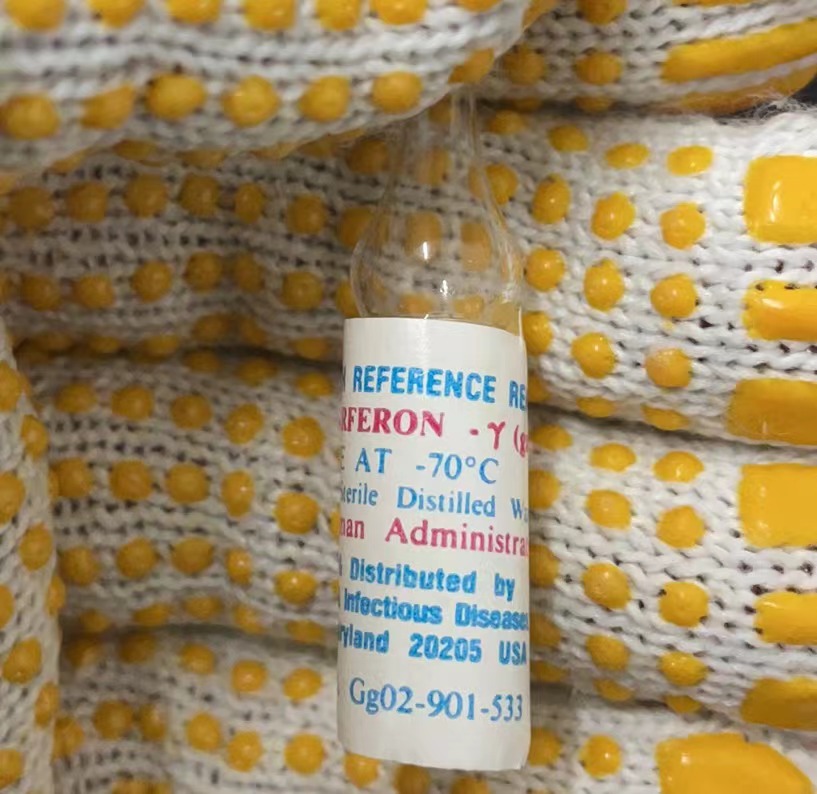NR-56447?? Spike Glycoprotein (Stabilized) from SARS-Related Coronavirus 2, B.1.1.529 Lineage (Omicron Variant) with C-Terminal Histidine and Avi Tags, Recombinant from HEK293 Cells(Proteins)|SARS-Related Coronavirus 2|Spike Glycoprotein (Stabilized) from SARS-Related Coronavirus 2, B.1.1.529 Lineage (Omicron Variant) with C-Terminal Histidine and Avi Tags, Recombinant from HEK293 Cells|-20°C or colder|BEI ResourcesAcknowledgment for publications should read “The following reagent was obtained through BEI Resources, NIAID, NIH: Spike Glycoprotein (Stabilized) from SARS-Related Coronavirus 2, B.1.1.529 Lineage (Omicron Variant) with C-Terminal Histidine and Avi Tags, Recombinant from HEK293 Cells, NR-56447.”|Quantity limit per order for this item is 1. This item can be ordered twice a year. Orders over this limit will be sent to NIAID for approval before shipment.
A recombinant form of the spike (S) glycoprotein from severe acute respiratory syndrome-related coronavirus 2 (SARS-CoV-2), B.1.1.529 lineage (Omicron variant) was produced in human embryonic kidney HEK293 cells and purified by immobilized metal affinity chromatography. NR-56447 lacks the signal sequence and contains 1193 residues (ectodomain) of the SARS-CoV-2 S glycoprotein; the recombinant protein was stabilized by substitution at the furin S1/S2 cleavage site (RRAR→GSAS; residues 682 to 685) and KV→PP mutations (residues 986 and 987; wild type numbering), and includes a T4 foldon trimerization domain, HRV3C protease cleavage site and C-terminal octa-histidine tag fused to an AviTag? BirA biotinylation acceptor sequence. NR-56447 includes A67V, delH69-V70, T95I, G142D, delV143-Y145, delN211, L212I, ins214EPE, G339D, S371L, S373P, S375F, K417N, N440K, G446S, S477N, T478K, E484A, Q493R, G496S, Q498R, N501Y, Y505H, T547K, D614G, H655Y, N679K, P681H, N764K, D796Y, N856K, Q954H, N969K and L981F mutations in the S glycoprotein as compared to the SARS-CoV-2 reference sequence (GenPept:
QHD43416). NR-56447 has a theoretical molecular weight of 139,900 daltons. The crystal structure for trimeric S glycoprotein from SARS-CoV-2 has been solved at 3.46 ? resolution (PDB:
6VSB).
The S glycoprotein mediates viral binding to the host angiotensin converting enzyme 2 (ACE2). This protein forms a trimer and, when bound to a host receptor, allows fusion of the viral and cellular membranes. B.1.1.529 is one of several lineages and sublineages designated Omicron by the World Health Organization (WHO) and was first identified in South Africa, followed by multiple countries in November 2021. This lineage contains multiple mutations in the receptor-binding domain (RBD) that have been identified in other variants, including K417N, N501Y and D614G. The presence of D614G among variants has been shown to increase transmissibility, with K417N, Q493R, N501Y and Y505H shown to be important residues mediating virus entry into host cells. E484A has been shown to decrease neutralization by post-vaccination sera and some monoclonal antibody treatments.
Each vial contains approximately 100 microliters of NR-56447 in 10 mM HEPES, pH 7, 150 mM NaCl and 2 mM ethylenediamine-tetraacetic acid (EDTA).


